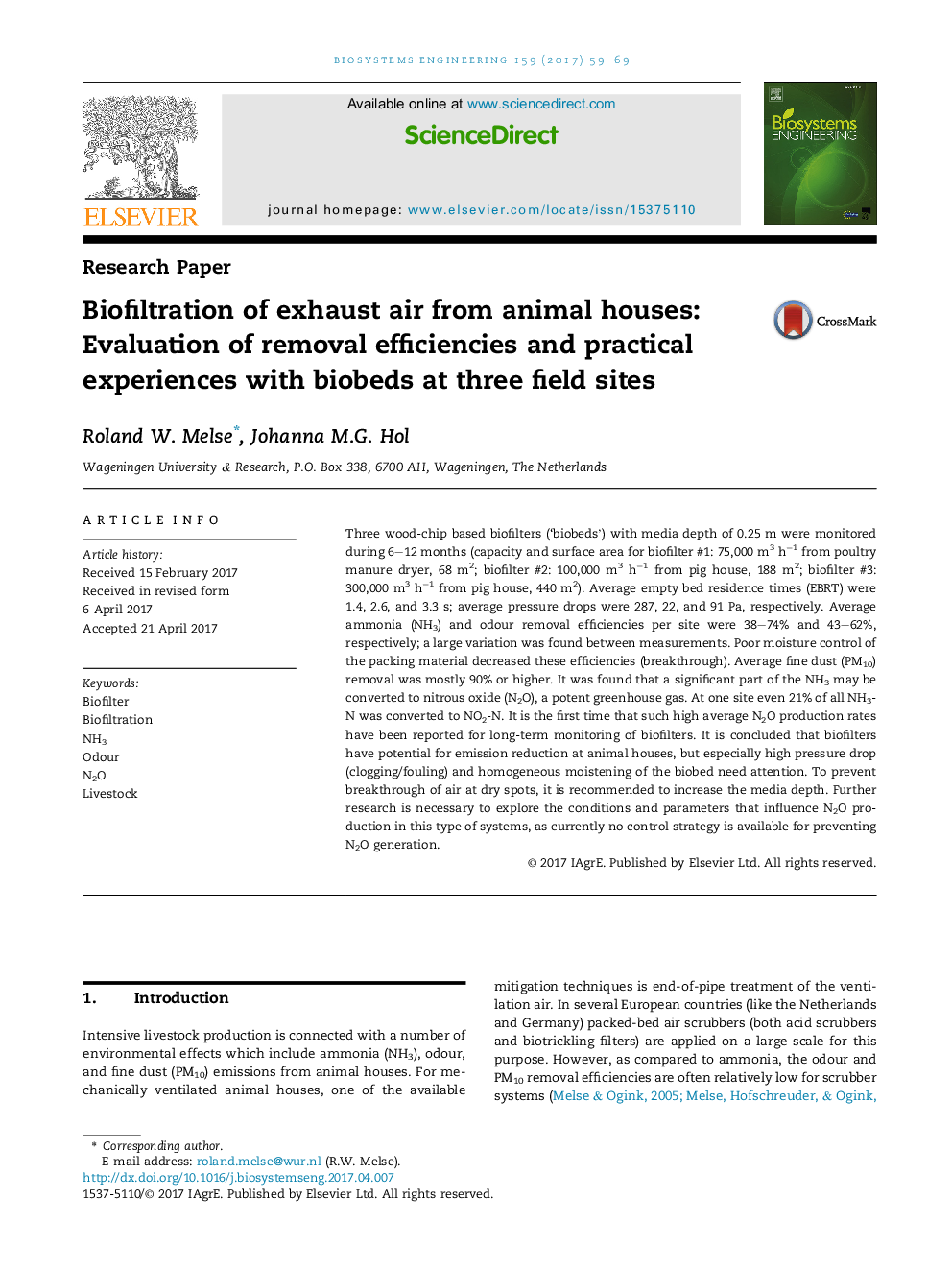| کد مقاله | کد نشریه | سال انتشار | مقاله انگلیسی | نسخه تمام متن |
|---|---|---|---|---|
| 5471897 | 1519502 | 2017 | 11 صفحه PDF | دانلود رایگان |
عنوان انگلیسی مقاله ISI
Biofiltration of exhaust air from animal houses: Evaluation of removal efficiencies and practical experiences with biobeds at three field sites
ترجمه فارسی عنوان
بیوفیلتراسیون اگزوز هوا از خانه های حیوانی: ارزیابی اثربخشی حذف و تجربیات عملی با زیست شناسی در سه محل
دانلود مقاله + سفارش ترجمه
دانلود مقاله ISI انگلیسی
رایگان برای ایرانیان
کلمات کلیدی
موضوعات مرتبط
مهندسی و علوم پایه
سایر رشته های مهندسی
کنترل و سیستم های مهندسی
چکیده انگلیسی
Three wood-chip based biofilters ('biobeds') with media depth of 0.25Â m were monitored during 6-12 months (capacity and surface area for biofilter #1: 75,000Â m3Â hâ1 from poultry manure dryer, 68Â m2; biofilter #2: 100,000Â m3Â hâ1 from pig house, 188Â m2; biofilter #3: 300,000Â m3Â hâ1 from pig house, 440Â m2). Average empty bed residence times (EBRT) were 1.4, 2.6, and 3.3Â s; average pressure drops were 287, 22, and 91Â Pa, respectively. Average ammonia (NH3) and odour removal efficiencies per site were 38-74% and 43-62%, respectively; a large variation was found between measurements. Poor moisture control of the packing material decreased these efficiencies (breakthrough). Average fine dust (PM10) removal was mostly 90% or higher. It was found that a significant part of the NH3 may be converted to nitrous oxide (N2O), a potent greenhouse gas. At one site even 21% of all NH3-N was converted to N2O-N. It is the first time that such high average N2O production rates have been reported for long-term monitoring of biofilters. It is concluded that biofilters have potential for emission reduction at animal houses, but especially high pressure drop (clogging/fouling) and homogeneous moistening of the biobed need attention. To prevent breakthrough of air at dry spots, it is recommended to increase the media depth. Further research is necessary to explore the conditions and parameters that influence N2O production in this type of systems, as currently no control strategy is available for preventing N2O generation.
ناشر
Database: Elsevier - ScienceDirect (ساینس دایرکت)
Journal: Biosystems Engineering - Volume 159, July 2017, Pages 59-69
Journal: Biosystems Engineering - Volume 159, July 2017, Pages 59-69
نویسندگان
Roland W. Melse, Johanna M.G. Hol,
